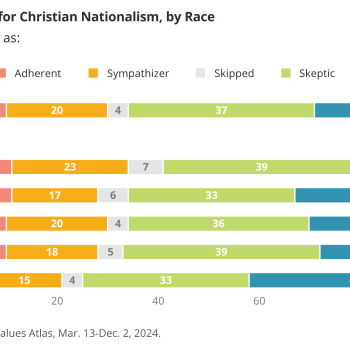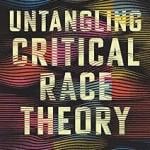This is now the first question that I ask whenever I enter into a conversation about race. I also always joke that I hope that I find myself among a sympathetic audience that thinks that something is wrong with racism.
Having been given that assurance, I encourage the room to throw out one of racism’s manifold evils:
“It’s unfair!”
“It leads to and comes from hate!”
“It breaks apart our unity!”
“It leads to violence!”
“The category of race is made up.”
I’m sure other examples came up in your minds. This is such an important question because assessment of the problem leads to articulation of the solution. I say this as I reflect on my colleague Ansley’s post this week and the words of Justice Roberts: “Eliminating racial discrimination means eliminating all of it.”
That statement along with its accompanying decision suggests a certain framing of the problem: one relatively consistent with the way that the Supreme Court has operated in recent years. The logic seems, at face value, to make sense: racial discrimination is bad, so let’s get rid of it. But it fails to consider what exactly is so bad about racial discrimination and what wound it opens up. Such a failure is clear in the fact that this is an articulation of the purpose of the Equal Protection Clause, as Roberts quotes the Court’s precedent immediately after this statement: that the clause applies “without regard to any differences of race, of color, or of nationality.” This is what we call colorblindness. The Reconstruction Amendments, however, were not colorblind.
The 13th, 14th and 15th Amendments were meant to actively extend freedoms to people who had been denied them: namely, freed slaves. As much as we may like to think that they confirmed something already in existence, in practical and material terms, those rights had to be defended. The extension of equal protection and voting rights could not be done by fiat, as slavery could not be done away with by fiat, regardless of what one might think about the Emancipation Proclamation. It required enforcement, in this case, by federal troops. This was one of the distinctive markers of the Reconstruction Era (1865-1877), as well as a significant source of white Southern resentment. The Klan and other paramilitary groups like the White League were founded in this era as an outpouring of this resentment: the extension of these freedoms to freedmen and freedwomen was a loss for explicitly White power structures. When Rutherford Hayes became president in 1877, one of the terms of his famous Compromise with Southern Democrats was to end federal support for Reconstruction and the military occupation of the South. With that move, the door was opened for folks to make the argument that all that was necessary had been done. The playing field was equal; nothing to see here! We know, however, that was not the case. The next near-century of Jim Crow made that explicitly clear.
The issue is not merely that racial discrimination is unfair and thus removal of it is fair. The construction of race and the mobilization of race, otherwise known as racism, do something: they justify and enforce inequality. As Duke Kwon and Gregory Thompson outline in their book on reparations, the essence of white supremacy is theft. This framing of race and racism is profoundly different from Roberts’ account as well as the account that seems to be reiterated by the Court over and over: if the issue were distinct acts of mistreatment that could be remedied by merely ceasing the activity, what we have been given would be enough. But if the issue is theft, the answer is not merely, “Stop stealing.” The answer is, “Give back that which was stolen.” That is the moral logic necessary to actually address the evils of race and racism: reparation and restitution.
The creation of the categories, as I will always repeat, was not merely the proliferation of a series of falsehoods. It was that: racial distinctions have no biological basis. But its primary purpose was to allow ballast for already existing structures of exploitation and inequality. Acting as though stunting their progress is the remedy for the years of unchecked progress these structures have enjoyed is to both underestimate the problem and to allow it to continue. Especially for the Christian, the goal is not merely not to exploit our neighbors. Our responsibility is to love our neighbors, which requires material investment. This material investment counteracts exploitation and, in fact, is the only way to truly combat it.
If this is indeed the case, this is a question that institutions of higher education can ask themselves: How long did we exist while actively keeping a particular population outside of our doors? Those are years of actively building systems meant to both exclude and create opportunities for a particular group of people. Just for the sake of argument, let’s consider schools that desegregated in the 1960s. The years that followed were rarely filled with counter-enforcement like that which somewhat deepened the roots of the Reconstruction Amendments. Few institutions saw their mandate as requiring the reversal of injustice; rather, many met such decisions with reluctant compliance. Justice rarely comes as a result of reluctant compliance. If I were to offer a quick rule offhand, one would have to spend at least as much time and resources actively remedying injustice as they did creating and perpetuating it. Many institutions would fail that test. Opening a door to a person whose legs you have broken with a hammer may make you feel better because the “opportunity” exists for that person, but we all know that that opportunity does not actually exist for them. Some of us settle by saying, “The door is open! They can crawl if they have to.”
My source for this kind of logic is the Westminster Larger Catechism. Alongside the Ten Commandments, we are reminded that the commandments contain both duties required and sins forbidden. The commandment not to murder includes the duty to actively seek the life and flourishing of our neighbors. The commandment not to covet includes a duty toward contentment. The commandment not to steal includes the duty of “truth, faithfulness and justice in commerce…and an endeavor, by all just and lawful means, to procure, preserve, and further the wealth and outward estate of others, as well as our own.” In other words, it’s not enough for me to just get mine. If I’m a Christian, I should be invested in you having what you need to survive. In this country, education is one of those necessary goods.
My plea is that we would have a deeper moral imagination. My plea is that we would not settle, in our conversations about the influence of race in our major institutions, for the elimination of racial discrimination. Let us not stop at seeking to stop evil. Let us seek to do good, particularly the good of healing wounds. And let us continue to be unrelentingly material in that work.













